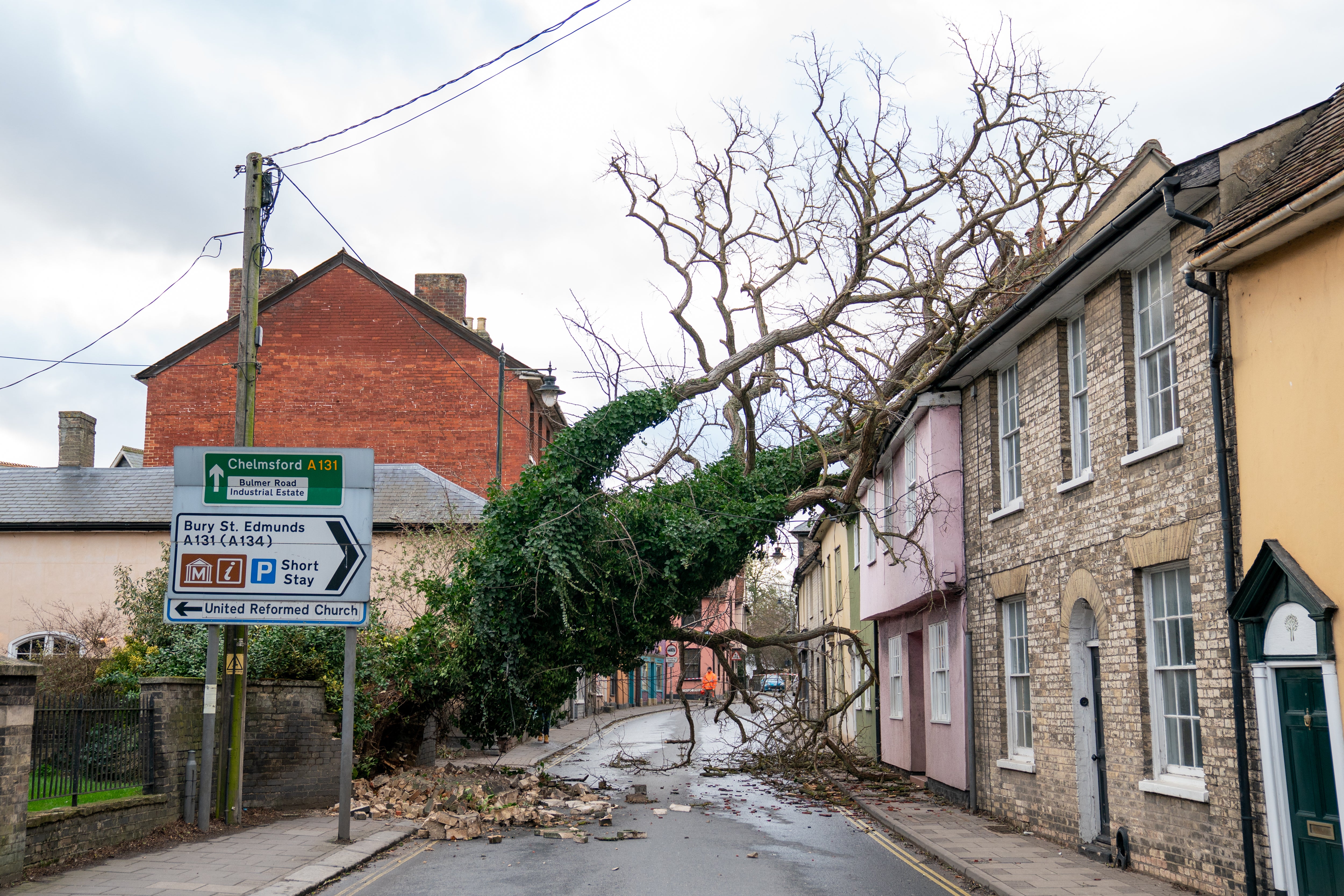Two dead and others injured as 120mph Storm Eunice batters UK and Ireland
The travel network, homes and services were all affected by one of the worst storms in a generation.

Your support helps us to tell the story
From reproductive rights to climate change to Big Tech, The Independent is on the ground when the story is developing. Whether it's investigating the financials of Elon Musk's pro-Trump PAC or producing our latest documentary, 'The A Word', which shines a light on the American women fighting for reproductive rights, we know how important it is to parse out the facts from the messaging.
At such a critical moment in US history, we need reporters on the ground. Your donation allows us to keep sending journalists to speak to both sides of the story.
The Independent is trusted by Americans across the entire political spectrum. And unlike many other quality news outlets, we choose not to lock Americans out of our reporting and analysis with paywalls. We believe quality journalism should be available to everyone, paid for by those who can afford it.
Your support makes all the difference.Two people have been killed and a handful of others injured as Storm Eunice brought damage, disruption and potentially record-breaking gusts of wind to the UK and Ireland.
A woman in her 30s died after a tree fell on a car in Haringey, north London, on Friday afternoon, the Metropolitan Police said. It is the first confirmed death in England related to Eunice.
Earlier, a man in Co Wexford, Ireland, was also killed by a falling tree.
It came as millions of people were urged to stay at home on Friday due to safety fears over the impact of Eunice, one of the worst storms to hit the UK in a generation, while transport woes meant many were unable to travel.
Both of the Met Office’s ultra-rare “red” weather warnings over the impact of extremely strong winds have now elapsed but Eunice’s impact is expected to continue.
A member of the public suffered “serious injuries” after being struck by debris from a roof in Henley-on-Thames.
Two men are also in hospital after being injured in similar, separate incidents in south London.
Tens of thousands of homes remain without power and the transport network remains severely impacted.
John Curtin, executive director of operations with the Environment Agency, said: “We are not through it yet. We have still got to see Storm Eunice go to the far parts of the coast – Cumbria and Kent.
“Then we will be turning our eyes to rivers, especially the River Severn. If you are anywhere near a river, please check your flood risk.”
He added: “Every storm seems to be breaking records.
“I have been doing this for 30 years and the weather seems to be just getting worse and worse.
“I think this is showing climate change in action.”
Winds of 122mph have been provisionally recorded at the Needles on the Isle of Wight, which, if verified, would be the highest ever recorded in England.
The previous record was 118mph at Gwennap Head in Cornwall in 1979.
Around 190,000 customers were without power as of lunchtime, according to the Energy Networks Association, with the vast majority of them in the south west of England.
On the transport network, several routes were closed.
Wind speeds forced both the M4 Prince of Wales Bridge and M48 Severn Bridge into Wales to close to traffic for what is believed to be the first time in history, while the Humber Bridge linking Yorkshire and Lincolnshire closed from 1.30pm.
The A6 in Buxton was also closed on Friday afternoon after a lorry blew over, causing minor injuries.
Train operators across Britain urged passengers to avoid travelling altogether, with no services operating in Wales for the entire day and seven train operators suspending all routes.
P&O Ferries stopped services between Dover and Calais, while dozens of flights were cancelled and hundreds delayed across UK airports.
Elsewhere, Royal Mail said it “had no choice” but to suspend deliveries in parts of the country due to safety concerns.
Footage shared online captured planes struggling to land in high winds, damage to the roof of the O2 Arena in London, and the spire of St Thomas Church in Wells, Somerset, crashing to the ground
But despite the chaos, emergency services were forced to issue warnings for people to stay away from the worst-affected areas.
Roy Stokes, from the Environment Agency, said it was “probably the most stupid thing you can do” to travel to the most exposed places, amid reports of people climbing on to seawalls and swimming in the sea.
Nevertheless, the Environment Agency said Eunice had “not resulted in the significant impact initially forecast”.
The Met Office has issued a less-severe yellow wind warning for much of the south coast of England and South Wales on Saturday, which it said “could hamper recovery efforts from Storm Eunice”.